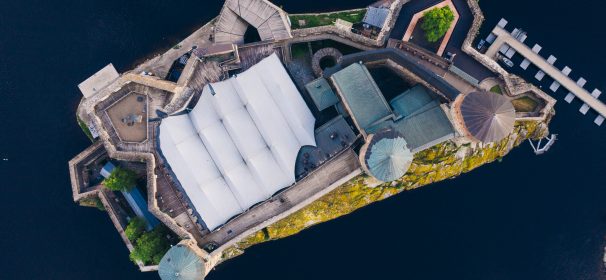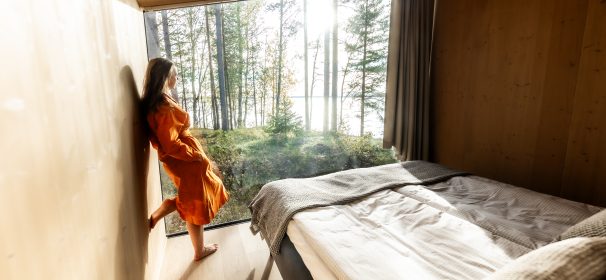Olavinlinna Castle is one of the best preserved medieval castles in the Nordic countries and a valuable heritage site. As a setting for the Opera Festival, it is magnificent, unique – and very challenging.
The Opera Festival venue is rebuilt every summer, as Olavinlinna Castle has no storage space or permanent structures for the festival. Loading takes place literally from the quay, as the technical equipment and sets have to be ferried across the river to the castle.
Unlike theatre buildings, Olavinlinna has no stage machinery, so almost everything is done manually. The dressing rooms and make-up rooms for the performers are situated in the castle’s labyrinthine interior or in tents in the courtyard. There are many flights of stairs. As a visitor to the opera festival, you have to be careful, especially in the castle’s uneven stone corridors.
‘Logistically, Olavinlinna is a difficult space that requires careful planning’, says production manager Jukka Pohjolainen. Or rather, he calls it ‘a logistical hell’, but in the same breath adds the word ‘magical’, because that’s what Olavinlinna is: ‘Despite all the difficulties, it is possible to create magical opera performances of the highest international quality in the castle. It requires some acclimatization from both the audience and the performers.’
Olavinlinna is a museum
The most northerly surviving medieval castle in the world is an invaluable cultural heritage site and museum. ‘Centuries of existing on the border between Swedish Finland and Russia have left the castle the way it is today, and this is what we want to preserve for future generations’, says the curator of Olavinlinna Castle, Jouni Marjamäki from the National Museum of Finland, part of the Finnish Heritage Agency.
The Opera Festival uses only a part of the castle during the months of June and July, and the festival must always respect the castle. Although the redesigned auditorium and the canopy that protects it have increased comfort, it is still an outdoor space. There is no air conditioning, and conditions change with the weather. This is part of the attraction of a summer event.
Arrive at Olavinlinna in plenty of time
You should allow plenty of time to get to the performance. There can often be queues, as there is only one, narrow way into the castle. Moreover, the walk from the waterfront through Tallisaari and across the pontoon bridge is surprisingly long. The gates open at 6pm, and the castle’s service counters open at the same time.
Access routes to Olavinlinna have been improved over the years, but it is not possible to make the listed museum castle completely accessible. ‘Everything that is demolished is lost forever’, says Jouni Marjamäki. Another kind of solution is required: the Opera Festival staff transport wheelchair users to the auditorium, and therefore wheelchair seats and tickets for carers can only be booked at the festival’s own ticket office.
Forward planning pays off in the intermission
During the half-hour intermission the castle is very busy. The interval cannot be any shorter, as there must be sufficient time to freshen up or go to the toilet. It most operas, it cannot be extended either because of the performers’ working time limits.
Ulla Myllymäki, director of catering, encourages you to order your interval refreshments in advance. Then they can be served in the location that is closest to your seat. There are also new features: serving posts for cocktails and local delicacies. The champagne bar on the upper terrace of the castle offers a magnificent view over Lake Saimaa. People often ask Myllymäki about the utensils used. ‘Glass or porcelain would be dangerous on the castle paving, but in the summer of 2024 disposable plates will be replaced by washable and recyclable ones.’
Olavinlinna is an indispensable part of the Opera Festival’s spirit. Impractical, perhaps. But that’s what makes it so enchanting.
Olavinlinna is managed by Senate Properties and the Finnish Heritage Agency. The National Museum of Finland is responsible for the castle’s attractions and museums.
Read more here.



